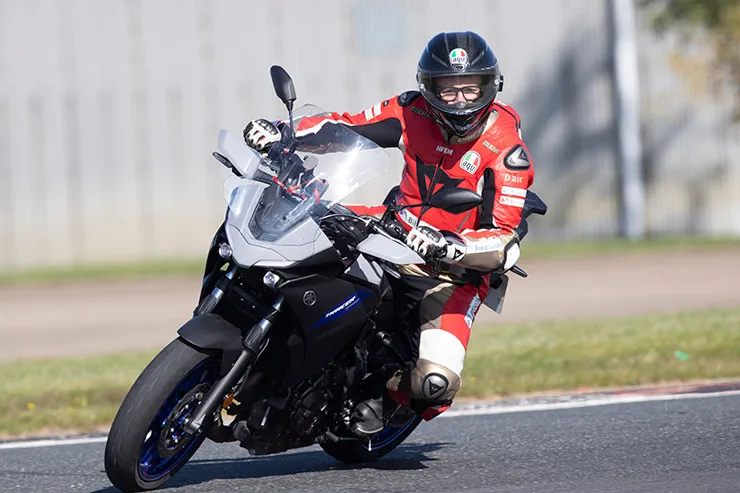Ahead of the curve - Eye tracking with expert motorcycle riders
Community Stories
Author(s): Pupil Dev Team
June 17, 2022

Motorcycle riders are often required to make split-second eye movements and manoeuvres to navigate through street scenes and race tracks. Looking in the right places at the right times is important for reacting to hazards, choosing a riding line, and adjusting speed and/or position.
Until recently it has been difficult to document where and when riders choose to look in real-life scenarios. Do novice riders look in the same places as experienced riders? What can eye movement strategies tell us about how vision is used to guide effective motorcycle control, avoid collisions and negotiate turns?
To answer these questions, Bennetts BikeSocial teamed up with Pupil Labs and deployed Pupil Invisible, a novel wearable eye tracker that can fit underneath a motorcycle helmet. Their aim was to record eye movements during motorcycle track riding in expert (McAM’s Yamaha star Jason O’Hallaran), experienced (Michael Mann; experienced track day rider), and novice (BikeSocial’s Chris Newble) riders.
The findings revealed marked differences in the way expert and experienced riders used vision when compared to the novice rider. The expert and experienced riders tended to look further ahead, and always focused – no double-checking – allowing more time to work out optimal speed and line. In contrast, the novice rider was distracted regularly, gazed at breaking markers, apexes and exits too late, and checked what was happening just in front, with little time to respond to potential hazards in reality.
Aspiring track day riders may well identify with these viewing behaviours and can build upon them to improve their own track performances. Higher-level racers may also reference their own viewing behavior with that of the expert rider. The article includes additional information on street riding, which we definitely recommend taking some time to consider!
We are pleased that Pupil Invisible can provide insights in challenging dynamic environments such as motorcycle riding, and look forward to seeing it used by race teams and other riders in the future.